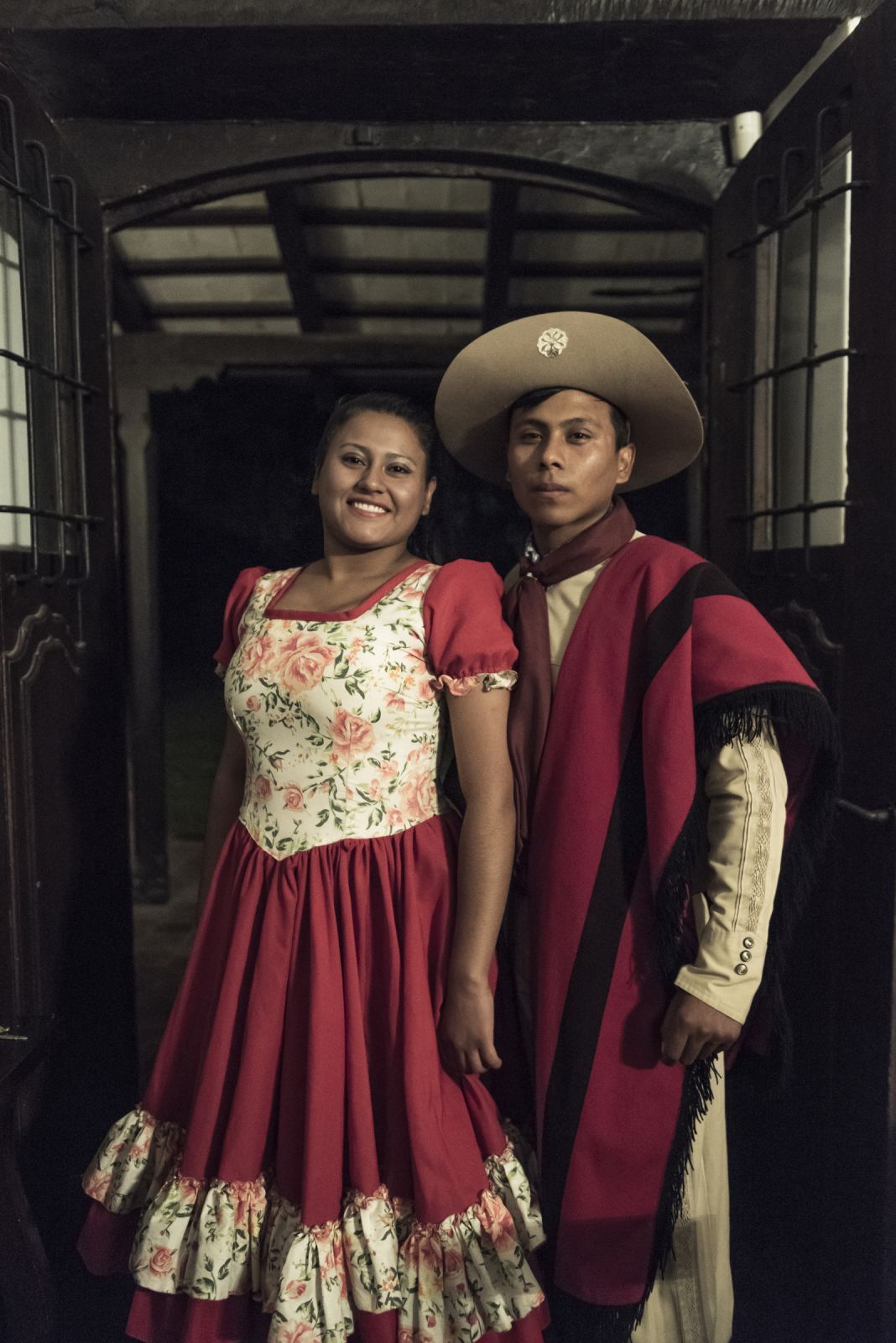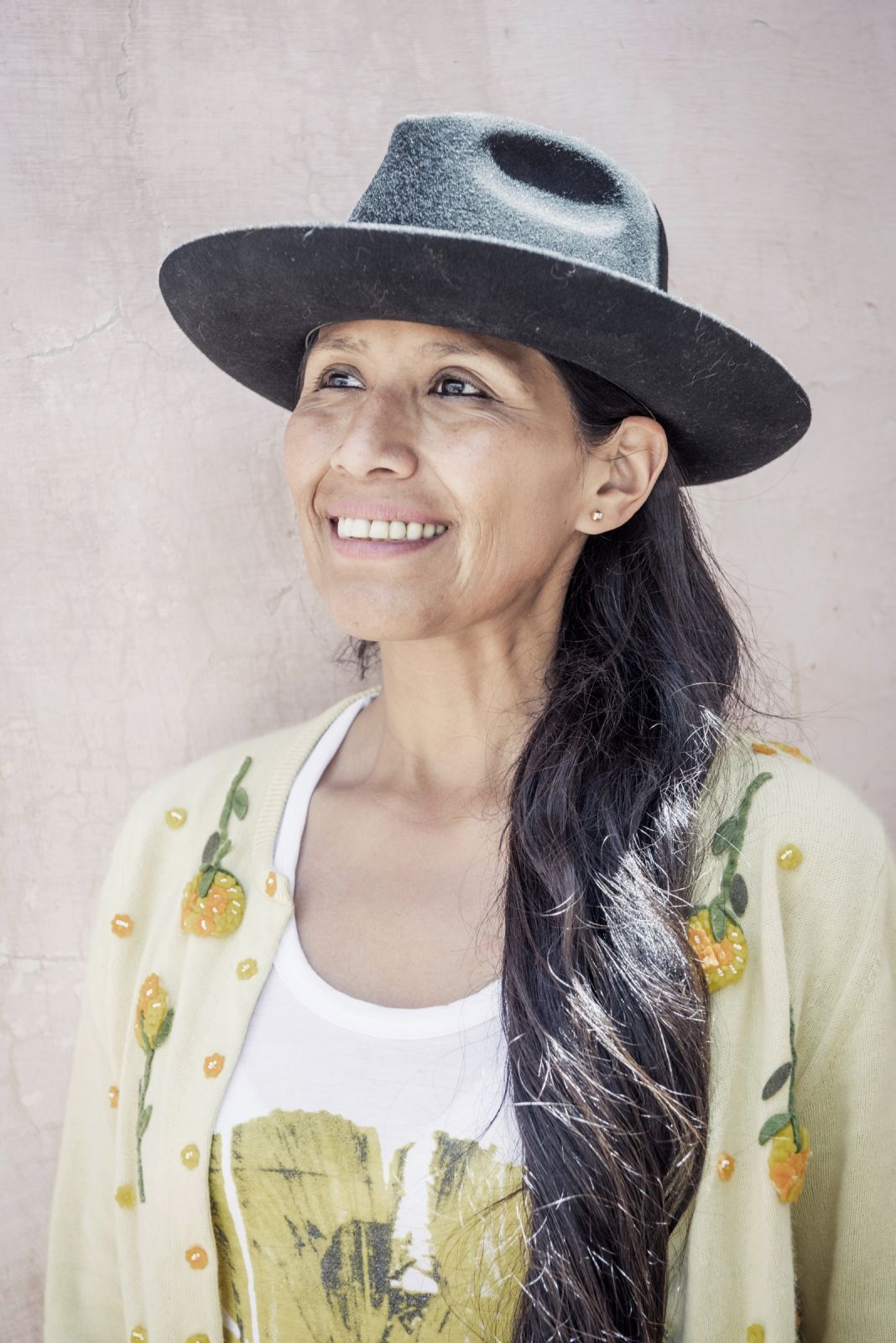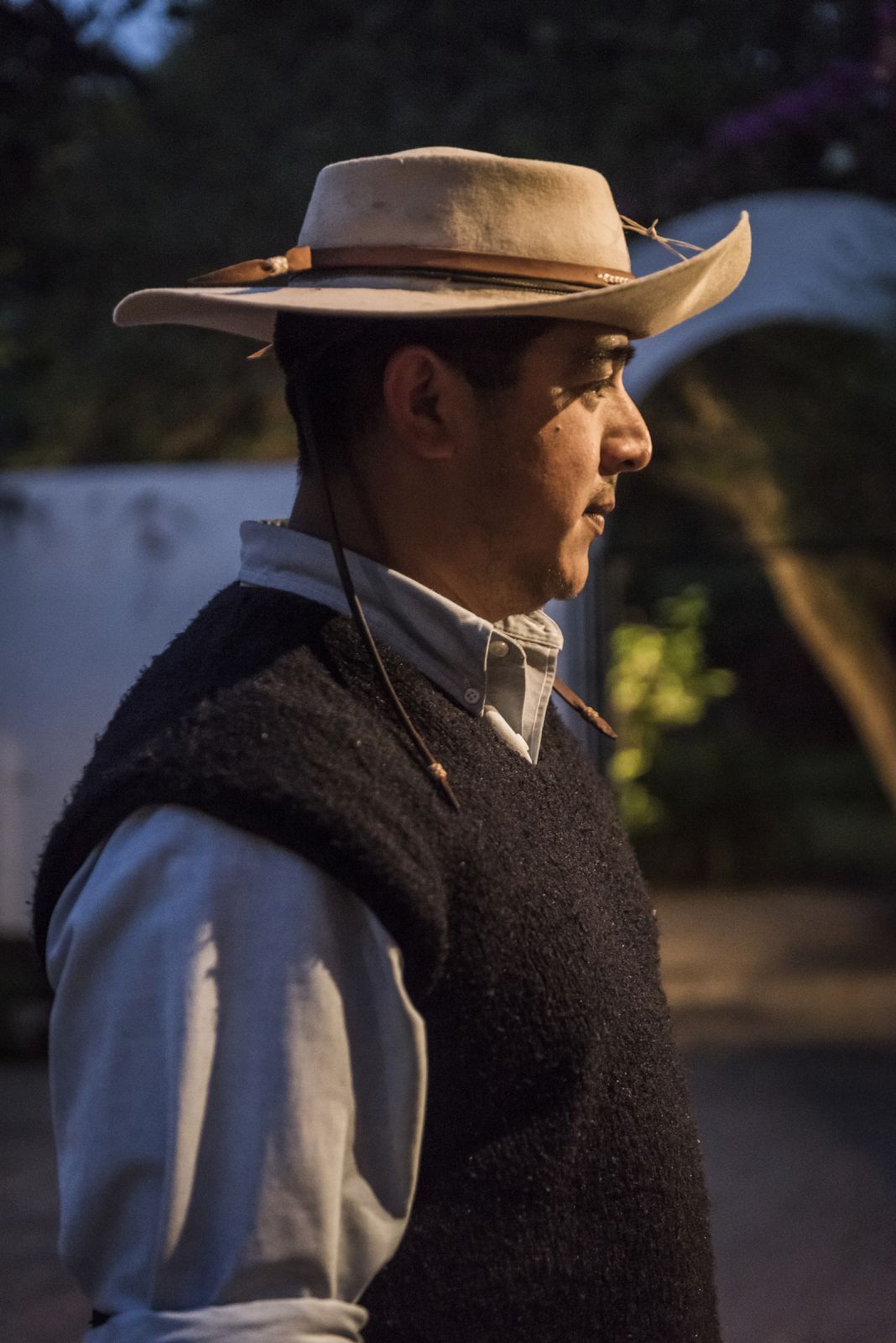The Beauty of Salta
Salta, Argentina
Deep in the heart of South America, in the north of Argentina at the foot of the Andes lies Salta. A great place to dream and fantasise against a backdrop of overwhelming natural beauty, paired with an excellent bife de ancho and fantastic fruity wines.
The charcoal glows orange in the corner of the fireplace. Fireplaces used as open fires in houses were intended for cooking. Here and there small flames lick from the coals towards a beautiful piece of bife de ancho, undoubtedly from a cow that roamed the pampas and grazed on its juicy grass. The scalding heat has gorgeously browned the ribeye and the smell of roasting meat and wood smoke fills the air as night begins to fall.

“Do you know why?” says Dario. I shake my head as my gaze shifts to the meat. “It’s because of the large amount of marbling. In scientific terms: intramuscular fat, i.e. the layers of fat between the muscles. Fat makes the meat juicy and stops it from drying out too quickly during cooking. The fat melts down into the meat and gives it an outstanding taste.”
My mouth has almost become a veritable Niagara Falls

I am staying at the Estancia El Bordo de Las Lanzas,in the area of Salta in Northern Argentina. Salta is one of Argentina’s 23 provinces, bordering Chile, Paraguay and Bolivia. Here you stand at the feet of the mighty Andes. The provincial capital Salta, from which the province takes its name, was founded by the Spanish conquistador Hernando de Lerma to connect Lima in Peru and Buenos Aires in Argentina. It was an essential stop along the route between these two cities and became a centre for silver mining, and both gold and silver are still mined there to this day.
Here you stand at the feet of the mighty Andes
This former wealth can is seen in the city’s often peculiar looking buildings. The city is nicknamed ‘La Linda’, the beautiful one. A town full of narrow alleys, colonial buildings and churches, which with their pink and light-blue players and supporting white pillars almost look like wedding cakes. There is no doubt the place has taste.
People had inhabited Salta for centuries before the arrival of the Spanish. This area was after all the southern tip of the former Inca Empire. 10% of Argentinean people have some form of indigenous heritage, the largest proportion of which live in Salta and the towns and villages surrounding it.
“How cruel, how gruesome” shudders a visitor of the Museo de Arqueología de Alta Montaña, the Museum of High Altitude Archaeology, as she stands face-to-face with La niña del rayo,the world-famous mummy of a six-year-old girl. This extraordinary museum lays bare the history of the Incas. Here you can see various artefacts and relics that have been found across, the Andes, the most unusual and disturbing pieces being the mummified bodies of the “Children of Llullaillaco”.
Blood and the remains of their last meal were still present in their bodies
The children were surrounded by bundles of food, silver and gold statues, woven cloth and numerous items of stoneware. Due to the low temperatures and the remote location of their burial, the bodies of children had remained perfectly intact, with original hair, skin and teeth. Even their blood and the remains of their last meal were still present in their bodies. These children of Llullaillaco have therefore been dubbed the best-preserved mummies in the world.

Salinas Grandes, the third largest salt flats in the world
We drive through the mountains. From Purmamarca the road goes up steeply. In front of us, a heavily-laden truck continues forward in stops and starts. The slopes of the Andes are full of minerals, particularly the Cerro de Los Siete Colores, the Hill of Seven Colours. Red rocks alternate with green, yellow, orange and ochre. The colourful palette of this mountain is so vivid that seems as if some sort of Instagram filter permanently colours it.
We are en route to the Salinas Grandes, the third largest salt flats in the world. The inhabitants of Salta also call these salt flats, which lie at over 3500m above sea level, océanos blancos, white oceans.

The altitude means the light is sparser, meaning the plants have to work harder
With our heads still in the clouds of stars, we focus on amore earthly pleasure, namely wine. If you were, to sum up, Argentina in two words, then meat and wine would certainly be in the top 3, and regarding wine the high altitude wines of the Fernando Dupont vineyard are king. It is also where the Pascanathat Dario served with the beef originates.The vineyard is located in Paraje San Pedrito at the heart of the Quebrada de Humahuaca, a UNESCO World Heritage site since 2003.

Fernando Dupont, an aristocratic gentleman with a huge love for his wine, explains why his particular fermented grape juice is so good. “This area is not only extremely dry, with mineral-rich soil, but the altitude means the light is sparser, meaning the plants have to work harder. The heat during the day, plus the near-freezing temperatures at night, results in our grapes developing thicker skins. This gives them quite high levels of tannin, which increases the wine’s longevity.” I hear him talking, and I am listening, but just as with the meat all I want to do now is to get my hands on a glass of wine. If that isallowed. Any wine in fact, whether it’s red, rosé or white… something with angels and tongue and so forth.
I sit on a leather chair and briefly feel like a landowner
Dario throws another piece of meat onto the parrilla. “We are proud of the beauty and bounties that this beautiful part of the world gives us,” he says. And rightly so I think, as I sit on a leather chair in the estancia’s dining room and briefly feel like a landowner.
Your local heroes
When you want to discover a region good guides and contacts are essential. In Salta we were welcomed by Fernando (Nano) Escudero and his wifeSoledad Gaztambide from Autentica Salta as if we were members of their own family. They are the perfect starting point for all your Salta adventures.







